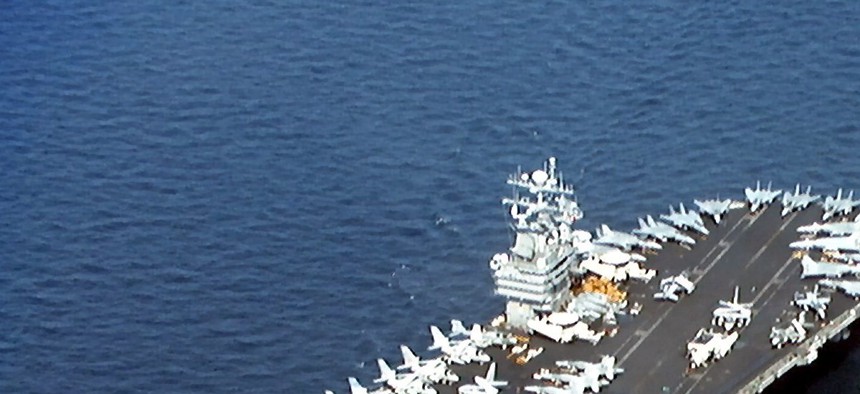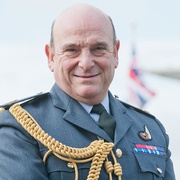
The U.S. Navy aircraft carrier USS John C. Stennis (CVN-74) (left), steams alongside the British Royal Navy aircraft carrier HMS Illustrious (R 06) in the Persian Gulf in 1998. DOD Photo
Building US-UK Military Relations With Science and Technology
Because the U.S. and Britain can’t afford to fight – or develop tomorrow’s technologies -- alone. By UK Air Chief Marshal Sir Stuart Peach
The last time I was in the United States, I had the honor of receiving the only gold medal I’m likely to get my hands on these days. It came from the Association of Old Crows, an electronic warfare and information operations advocacy group founded in the U.S. in 1964. As the first British recipient, the medal was both a recognition of the United Kingdom’s role in electronic warfare and a symbol of the deep cooperation between American and British personnel in a field most may not think of: science.
I’ve been privileged throughout my 40 years of military service to work regularly alongside brave and distinguished members of all U.S. services. Most people are familiar with our cooperation on the battlefield, most recently in Afghanistan, where our combat mission has now drawn to a close after 8 years of heroic sacrifice in Helmand Province.
People might be less familiar with the vital work our military-scientific communities do together; but this, too, is a relationship that goes back decades. Arguably, it traces its modern origins to 1940. That September, Sir Henry Tizard led a team of UK military and civilian scientists on a secret mission to the U.S. The Tizard Mission was intended to bring U.S. expertise and resource to bear in cracking some of the most difficult military technology problems facing a country increasingly vulnerable to German invasion.
Tizard’s ‘briefcase’ (actually a big metal box) contained classified technical information on rocket designs, gyroscopic gun sights, plastic explosives and superchargers, together with ideas and inventions that would lead to some of the greatest military-scientific advances of the 20th Century. The cavity magnetron would yield a radar small enough to be carried by an aeroplane. The Frisch-Peierls memorandum described the feasibility of an atomic bomb. Frank Whittle’s jet engine design would become ubiquitous.
These innovations would help turn the tide of that war, and would go on to yield technology that would give the U.S. a vital edge over future rivals. Collaboration between the UK and the U.S. was critical to the nuclear offset of the 1940s and 1950s, prior to the emergence of the concept of Mutually Assured Destruction.
Further advances in radar, precision missile delivery systems, information technology and stealth all secured our strategic advantage. Some thinkers, including Defense Secretary Chuck Hagel and Deputy Defense Secretary Robert Work, now argue that these advantages, too, have largely run their course. I don’t know which are the future technologies driving defence that will contribute to securing our strategic advantage. But I do know that UK-U.S. cooperation will remain vital. We are still each other’s largest science and technology partners, both in defense and wider academia. Our industrial collaboration, aided by a number of key UK innovations, has brought the F-35 to life. In remotely piloted air systems, through Taranis, we’ve demonstrated the technologies that will help keep the next generation of unmanned combat aircraft at the cutting edge. The high altitude Zephyr, entirely developed in the UK, has recently set records for solar powered flight.
Both countries have recognised that we can no longer afford to develop military technology exclusively ‘in-house.’ We must also exploit the seemingly exponential gains being made in the private sector. We may well be returning to an age where, like the steam-powered industrial revolution, industry innovates and defence exploits.
In February, Under Secretary of Defense Frank Kendall signed the U.S.-UK Science and Technology Communiqué, which builds on existing areas of cooperation whilst adding new focus on cyber, space, data and energy. It also strengthens still further the links between British and American academics and the defence industry.
In this age of austerity, and with increasing reliance on each other to conduct military operations, one advantage is more important than ever: our nations’ partnership. By forging new agreements and building on the legacy of our pioneering predecessors, together we can help to secure the next strategic advantage.
NEXT STORY: US Foreign Policy, Viewed from the Middle East




